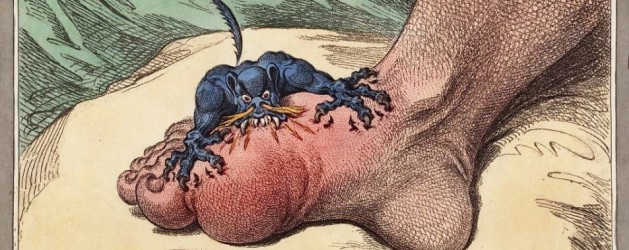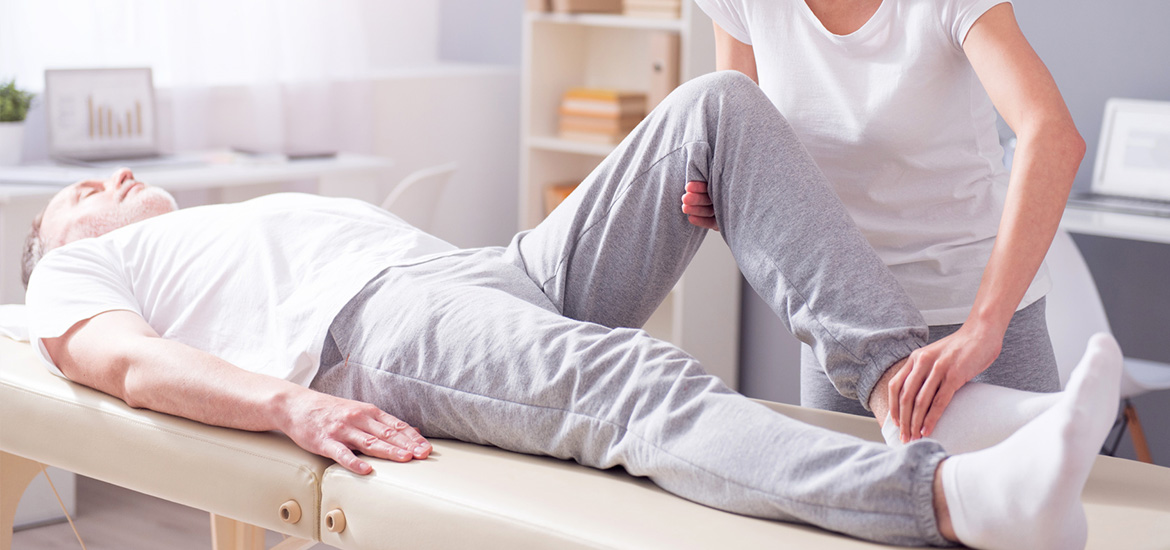Joint pain and diseases of the joints can be complex. A common causes can be one of several arthritis types, which come in many different forms such as rheumatism, osteoarthritis or gout.
In many cases, it’s possible to have a combination of these conditions.
SUMMARY
This article explains the differences between Arthritis, Rheumatism, Osteoarthritis and Gout. Symptons and treatment options for gout are explained in detail.
Arthritis
Arthritis is a term that describes in excess of 100 different medical conditions that cause joint inflammation and stiffness. Arthritis can affect one or multiple joints. Often the pain is constant and localised in the affected joint(s). Arthritic pain is caused by a variety of factors: joint inflammation, joint damage from disease, joint wear and tear, fatigue, and muscle strains as a result of forced movements on stiff joints.
Although there are many different forms of arthritis, osteoarthritis is the most common. This is frequently associated with older generations. There are also forms of arthritis that can strike people at a very young age. Both men and women are susceptible to arthritis, although different forms may develop at stages of life. In general, women tend to show more arthritic symptoms post menopause, while men can develop symptoms earlier.
Osteoarthritis
They symptoms of osteoarthritis are basically similar to that of rheumatoid arthritis. However, osteoarthritis is a degenerative disease. Over time, the joint cartilage and the underlying bone breakdown. Joint injuries early in life can mark the beginning of osteoarthritis when articular cartilage becomes damaged. Osteoarthritis causes pain and stiffness of the joints. The knees, hips, wrists and thumb joints are most commonly affected.
Symptoms of osteoarthritis typically present from middle age onward. It’s common in both men and women, although men tend to develop the disease younger than women. By the age of 60, osteoarthritis is a common condition amongst both men and women. As the most common joint-related disease, it’s estimated that over 9 million people in the UK suffer from osteoarthritis1.
Rheumatism
Rheumatism is a non-specific term that’s used to describe medical conditions that affect joins and connective tissue. It’s characterised by pain and inflammation of the tissues and muscles surrounding the joints.
Rheumatoid arthritis is an autoimmune form of arthritis. It’s considered as a severe form of arthritis. The immune system of people suffering from rheumatoid arthritis attacks synovium2. This is the soft lining that occurs around the joints. As a result, the joints become inflamed, stiff and tender as fluid builds up in the affected area.
The exact cause is poorly understood, although there’s likely to be a connection between hormones, genetics and environmental factors. Rheumatoid arthritis tends to affect smaller joints, such as the ankles and hands.
Rheumatoid arthritis can develop quickly, typically within a year. It affects more women than men and usually develops between 35 and 45 years of age. In the UK, it’s estimated that over 500,000 people suffer from rheumatoid arthritis3.

Gout
Another form of arthritis, gout is a genetic disorder disease in which uric acid isn’t properly metabolised. The genetic defect manifests itself in the incorrect metabolism of purine and differs from other types of rheumatic diseases.This leads to an accumulation of uric acid the bloodstream, because it can’t be effectively excreted by the kidneys.
Since the body can’t properly remove uric acid from the blood, it stores it in the joints. It does so most frequently in the smaller bones of the feet and often in the big toe.
These uric acid deposits (also known as tophi) appear as lumps under the skin. Gout can cause painful swelling, pain and joint stiffness.
Often the affected area is red and hot to touch. In addition to affecting the big toes, gout may also affect the ankles, knees, heels, wrists, elbows and fingers.
The onset of gout can be sudden. Around four times more men experience gout than women. Over the age of 35, men tend to be more prone to this disease. Generally, women aren’t affected by gout until after menopause. In the UK, approximately 285,000 adults suffer from gout4.
Gout Symptoms
There are two different forms of gout. Primary gout is hereditary, and secondary gout is a result of renal failure5.
The development of gout happens usually in three stages:
In its initial stage, uric acid levels in the blood can be high for several years but go unnoticed due to no physical symptoms.
The second stage is usually characterised by an acute attack of gout. The deposited uric acid crystals in the joints begin to rub on the joint surfaces and abrade them. Pain typically occurs predominantly at night in the metacarpophalangeal joints of the toes or on the thumb.
In an acute gout attack the affected joints are always red, swollen and very painful. In very severe cases fever can also develop.
The third stage is the chronic stage. The disease is then characterized by persistent joint pain and increasing deformations of the joints of the hands and feet.
Gout Treatment Options
As a genetic disease gout is not curable. However, the course of the disease can be altered by making conscious diet choices (foods which include natural remedies for gout). A low purine diet is essential to reduce the amount of uric acid in the blood stream6. Avoid meats such as liver, kidney and sweetbreads for example.
This lowers the concentration of uric acid crystals in the joints and active attacks of gout can be prevented7. Also, maintaining a healthy bodyweight and staying active have been shown to lower the risk of gout symptoms8.
Product guide: MSM capsules
Several good food supplements contain nutrients beneficial for joint pain. As the health of the joint cartilage depends on many factors, combination preparations are usually superior to individual active ingredients.
Provide your joints with all nutrients they need. Here are three popular MSM supplements for your joints.
Bibliography
- Arthritis Research UK. 2013. “Osteoarthritis in general practice – data and perspectives” (PDF 4.2 MB)
- Ogrendik M. 2013. “Rheumatoid arthritis is an autoimmune disease caused by periodontal pathogens”. Int J Gen Med 6, 383-6
- Symmons D, Turner G, Webb R, Asten P, Barrett E, Lunt M et al. 2002. “The prevalence of rheumatoid arthritis in the United Kingdom: new estimates for a new century.” Rheumatology. 41(7):793–800
- Arthritis Research UK. “Gout.” Retrieved 29-10-2013 from http://www.arthritisresearchuk.org/arthritis-information/data-and-statistics/gout.aspx
- Krishnan E., 2012. Reduced glomerular function and prevalence of gout: NHANES 2009-10. PLoS One 7 (11)
- Gianni et al., 2012. Adherence to the Mediterranean diet and serum uric acid: the ATTICA study. Scand J Rheumatol 41 (6), 442-9
- Li & Micheletti., 2011. Role of diet in rheumatic disease. Rheum Dis Clin North Am 37 (1), 119-33
- Oliviera et al. 2013. Dietary, anthropometric, and biochemical determinants of uric acid in free-living adults. J Nutr 12, 11






